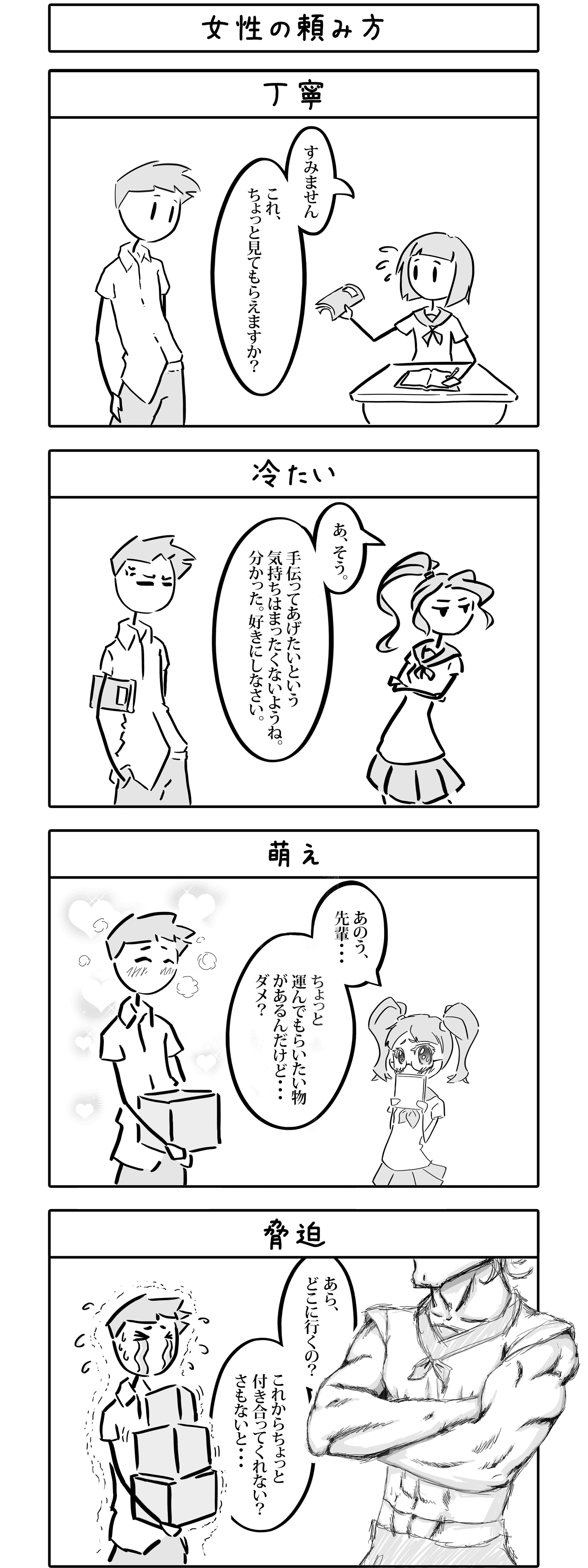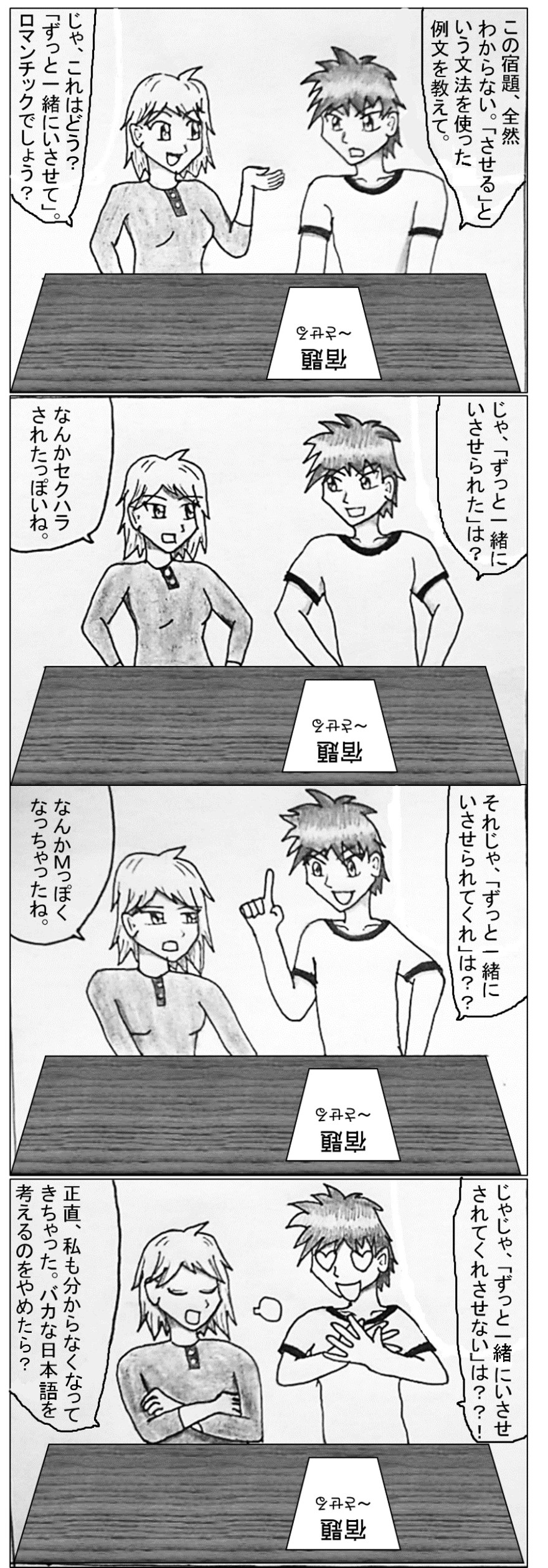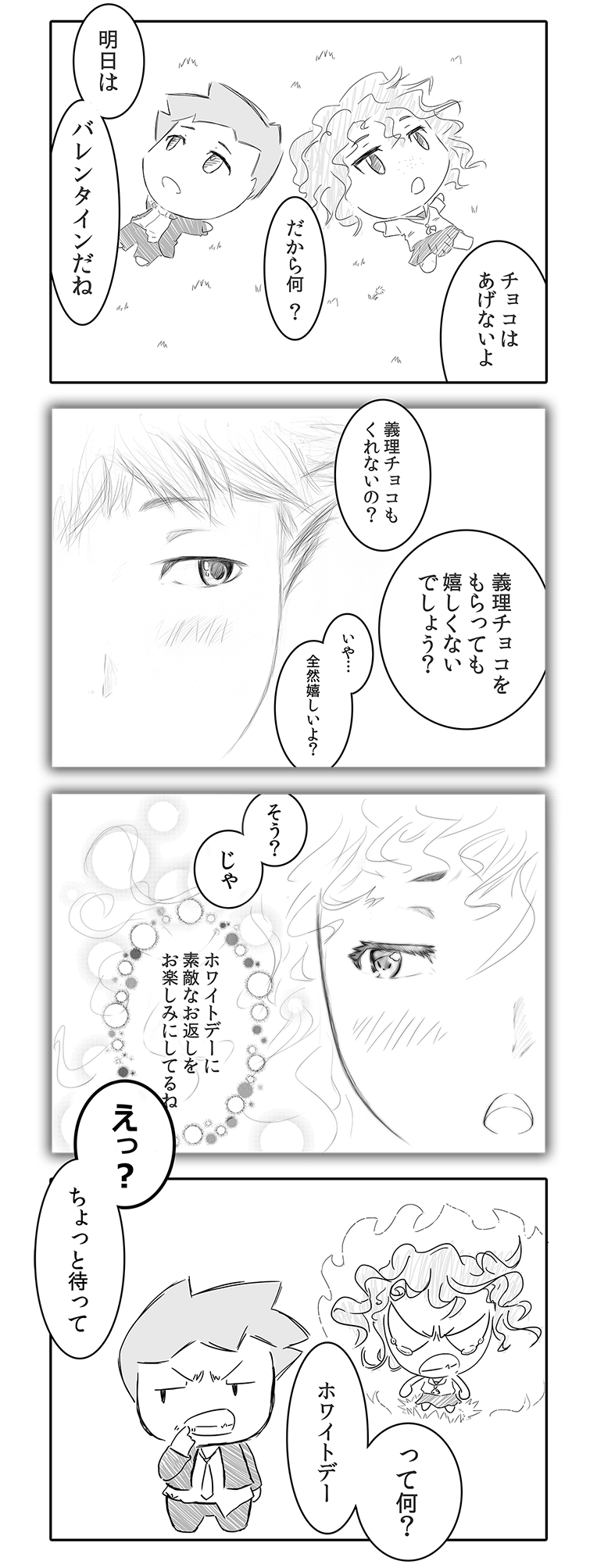We learned how to express the progressive form by using the verb 「いる」 with the te-form of the verb. In this section, we’ll learn some other verbs we can use with the te-form to describe other kinds of states. When using these verbs in this fashion, it is customary to use Hiragana instead of Kanji.
Using 「ある」 to express an action already set
Till now, we have been using 「いる」 quite frequently with the te-form to express a progressive action. The other verb for existence: 「ある」 can also be used with the te-form, though the meaning is completely different.
Appending 「ある」 after the te-form of another verb is used to indicate the state of the verb as already completed. For example, you could use this grammar to ask what is written in a book as it describes a completed state of being written as opposed to “writing” or “wrote”. It also carries a nuance that the action was done as preparation for something else though it’s not as explicit as the 「~ておく」 grammar we’ll learn next.
Example
- その本には、何が書いてあるんですか?
What is it that’s written in that book? - 予約は、もうしてあるから、心配はいらないよ。
(I) already made (the) reservation so (there’s) no need to worry. - この店に頭痛薬は、置いてありますか?
Are headache medicine(s) placed in this store?
Because 「~てある」 by itself described state after an action was completed, the past tense described that state as being in the past, for example to imply that the state is no longer true, invalid, or contradictory.
Example
- メールには、この駅で待ち合わせしようと書いてありましたよ。
It was written in the mail, let’s meet up at this station, you know. - 冷蔵庫に置いてあったプリン・・・。まさか、食べたんじゃないよね。
The pudding (I) was placed in (the) refrigerator… No way (you) ate (it), right?
Using 「おく」 to prepare for the future
While the previous 「~てある」 grammar we learned can carry a nuance of preparation, it could only be used for completed actions. We can use the verb 「おく」 (“to place”), to describe an action specifically to prepare for something else. In addition, unlike 「~てある」, it can be used to described other tenses besides the past tense.
Example
- 今から行くから、デザートを少し残しておいてよ。
(I’m) going now so please leave me some desert. - 明日からは、連休だから、現金を下ろしておいたほうがいいよ。
Holidays are from tomorrow so (you) should withdraw cash. - 鍵をここに置いておくから、忘れないでね。
(I’m) placing (the) key here so please don’t forget it, ok?
In casual speech, 「~て/~で+おく」 can be shortened to 「とく/どく」.
Example
- 鍵をここに置いとくから、忘れないでね。
(I’m) placing (the) key here so please don’t forget it, ok? - 船に乗るなら、酔い止め薬を飲んどいた方がいいよ。
If/since (you’re) riding (a) boat, (it’s) better
Using motion verbs with the te-form (いく/くる)
The verbs “to go” and “to come” (いく and くる respectively) can be used with the te-form of another verb to add a motion. This can either be a physical motion (eg to hold and bring something) or an abstract direction/trend (eg plans for the future going forward).
Example
- 仕事しなくて、これからどうやって生きていくつもりですか。
How (do you) plan to live from here on out and not work? - 明日の鍋パーティーに何を持ってくればいいの?
What should (I) bring to the Nabe party tomorrow? - うるさい!ああ、なんか頭が痛くなってきた。
Noisy! Ah, (my) head has come to become hurting.


